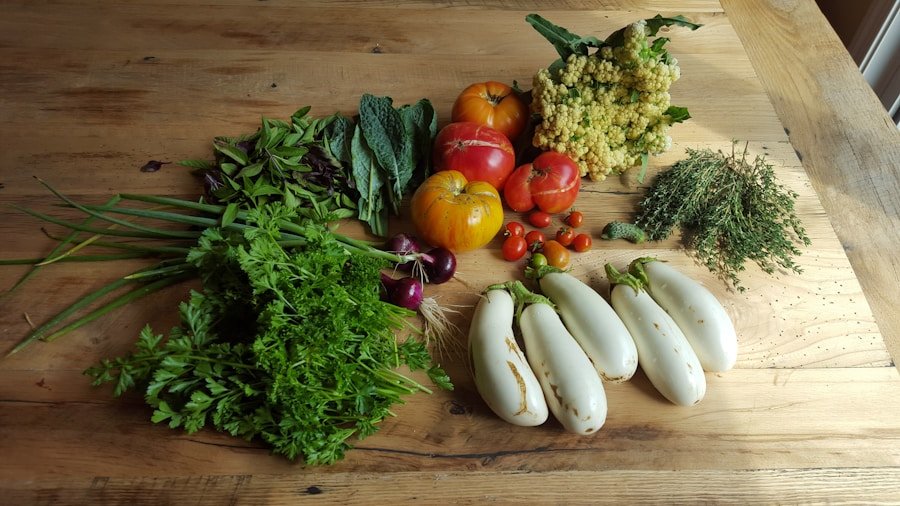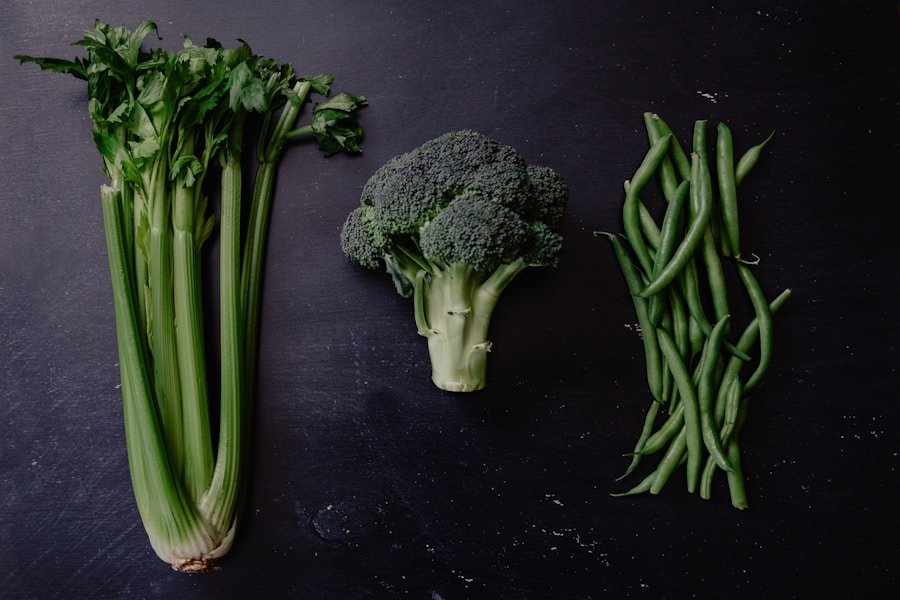A balanced diet is essential for maintaining optimal health and well-being. It encompasses a variety of foods that provide the necessary nutrients, vitamins, and minerals required for the body to function effectively. Among the key components of a balanced diet, vegetables play a pivotal role.
They are not only low in calories but also rich in essential nutrients, making them a cornerstone of healthy eating. Incorporating a diverse range of vegetables into daily meals can significantly enhance overall health, reduce the risk of chronic diseases, and promote longevity. Vegetables are often categorized based on their botanical characteristics and nutritional profiles.
This classification helps in understanding their unique benefits and how they can be best utilized in our diets. From leafy greens to root vegetables, each category offers distinct flavors, textures, and health benefits. By embracing a wide variety of vegetables, individuals can ensure they receive a comprehensive array of nutrients that support bodily functions, boost immunity, and contribute to overall vitality.
Key Takeaways
- A balanced diet includes a variety of vegetables to ensure optimal nutrition and health benefits.
- Vegetables are rich in essential nutrients such as vitamins, minerals, and fiber, which are important for overall well-being.
- Leafy greens like spinach, kale, and Swiss chard are packed with vitamins A, C, and K, as well as iron and calcium.
- Cruciferous vegetables such as broccoli, cauliflower, and Brussels sprouts are high in fiber, vitamins C and K, and antioxidants.
- Root vegetables like carrots, sweet potatoes, and beets are excellent sources of vitamins, minerals, and dietary fiber for a healthy diet.
Nutritional Benefits of Vegetables
Vitamins and Bodily Functions
For instance, vitamin A is vital for eye health and immune function, while vitamin C plays a significant role in collagen production and acts as an antioxidant.
Fiber, Phytonutrients, and Chronic Diseases
Additionally, many vegetables are excellent sources of dietary fiber, which aids in digestion and helps maintain a healthy weight by promoting satiety. Moreover, vegetables are rich in phytonutrients—bioactive compounds that have been shown to reduce inflammation and combat oxidative stress. These compounds can help lower the risk of chronic diseases such as heart disease, diabetes, and certain cancers.
Antioxidants, Hydration, and Overall Health
For example, the antioxidants found in colorful vegetables like bell peppers and tomatoes can neutralize free radicals in the body, thereby protecting cells from damage. The high water content in many vegetables also contributes to hydration, which is essential for maintaining energy levels and overall health.
Leafy Greens: Spinach, Kale, and Swiss Chard

Leafy greens are among the most nutrient-dense foods available, offering a plethora of health benefits. Spinach is particularly renowned for its high iron content, which is essential for oxygen transport in the blood. It also contains significant amounts of vitamins A and K, both of which are important for maintaining healthy skin and bones.
The versatility of spinach allows it to be easily incorporated into salads, smoothies, or cooked dishes without losing its nutritional value. Kale has gained popularity as a superfood due to its impressive nutrient profile. It is loaded with antioxidants such as quercetin and kaempferol, which have anti-inflammatory properties.
Additionally, kale is an excellent source of calcium and magnesium, both of which are vital for bone health. The robust flavor of kale makes it suitable for hearty salads or as a cooked side dish. Swiss chard, with its vibrant stems and dark green leaves, is another leafy green that should not be overlooked.
It is rich in vitamins A, C, and K, as well as minerals like potassium and iron. The slightly bitter taste of Swiss chard can be balanced with lemon juice or paired with garlic for a delicious side dish.
Cruciferous Vegetables: Broccoli, Cauliflower, and Brussels Sprouts
| Vegetable | Nutrient Content | Calories per 100g | Vitamin C (mg) | Fiber (g) |
|---|---|---|---|---|
| Broccoli | High in Vitamin C, Vitamin K, and Fiber | 34 | 89.2 | 2.6 |
| Cauliflower | Rich in Vitamin C, Vitamin K, and Folate | 25 | 48.2 | 2 |
| Brussels Sprouts | Good source of Vitamin C, Vitamin K, and Folate | 43 | 85 | 3.8 |
Cruciferous vegetables are known for their unique sulfur-containing compounds called glucosinolates, which have been linked to cancer prevention. Broccoli is one of the most well-studied cruciferous vegetables; it is rich in vitamins C and K and provides a good amount of fiber. The presence of sulforaphane—a compound derived from glucosinolates—has been shown to have protective effects against certain types of cancer by promoting detoxification enzymes in the body.
Cauliflower has emerged as a popular alternative to grains and legumes due to its versatility and low carbohydrate content. It can be transformed into rice or mashed to create a creamy side dish without the added calories of traditional starches. This vegetable is also high in antioxidants and provides a good source of vitamins B6 and K.
They contain high levels of fiber and vitamin C while also being a source of omega-3 fatty acids when prepared correctly. Roasting Brussels sprouts with olive oil can enhance their natural sweetness and make them more palatable.
Root Vegetables: Carrots, Sweet Potatoes, and Beets
Root vegetables are not only hearty but also incredibly nutritious. Carrots are perhaps the most recognized root vegetable, celebrated for their high beta-carotene content, which the body converts into vitamin This nutrient is essential for maintaining good vision and supporting immune function. Carrots can be enjoyed raw as snacks or cooked in various dishes to enhance their sweetness.
Sweet potatoes are another powerhouse among root vegetables. They are rich in complex carbohydrates and fiber while providing an array of vitamins such as A and The vibrant orange color indicates a high concentration of beta-carotene, making sweet potatoes an excellent choice for promoting eye health. They can be baked, mashed, or even used in desserts to add natural sweetness without refined sugars.
Beets are often overlooked but offer unique health benefits as well; they are high in nitrates, which can improve blood flow and lower blood pressure. Roasting or pickling beets can bring out their earthy flavor while retaining their nutritional value.
Allium Vegetables: Onions, Garlic, and Leeks

Allium vegetables are known for their distinctive flavors and health-promoting properties. Onions are a staple in many cuisines around the world; they contain quercetin, an antioxidant that has anti-inflammatory effects. Onions can be consumed raw in salads or cooked to enhance the flavor profile of various dishes.
Their versatility makes them an essential ingredient in countless recipes. Garlic is often hailed for its medicinal properties; it contains allicin, a compound that has been shown to have antimicrobial effects and may help lower cholesterol levels. Incorporating garlic into meals not only adds flavor but also provides numerous health benefits.
Leeks, with their mild onion-like flavor, are another member of the allium family that deserves attention. They are rich in vitamins A and K while providing dietary fiber that supports digestive health. Leeks can be used in soups or sautéed as a flavorful addition to various dishes.
Bell Peppers: Red, Yellow, and Green
Bell peppers are celebrated for their vibrant colors and sweet flavor profile. They are an excellent source of vitamin C—one medium-sized bell pepper can provide more than 100% of the daily recommended intake for this essential nutrient. Vitamin C is crucial for collagen synthesis and immune function; thus, incorporating bell peppers into meals can significantly boost overall health.
The different colors of bell peppers indicate varying nutrient profiles; red peppers tend to have higher levels of antioxidants compared to their green counterparts due to their longer ripening process. Yellow bell peppers offer a slightly sweeter taste while still being rich in vitamins A and These colorful vegetables can be enjoyed raw in salads or cooked in stir-fries or stuffed with grains and proteins for a nutritious meal option.
Tomatoes: Fresh and Canned
Tomatoes are one of the most versatile fruits used in cooking worldwide; they can be enjoyed fresh or processed into sauces, soups, or canned products. Fresh tomatoes are an excellent source of vitamin C and potassium while providing lycopene—a powerful antioxidant linked to reduced risk of heart disease and certain cancers. The vibrant red color of tomatoes indicates the presence of lycopene; cooking tomatoes can actually increase the bioavailability of this beneficial compound.
Canned tomatoes offer convenience without sacrificing nutritional value; they retain most of their vitamins and minerals while providing an easy way to incorporate this fruit into various dishes year-round. Whether used in pasta sauces or chili recipes, canned tomatoes serve as a flavorful base that enhances the overall taste while delivering essential nutrients. The versatility of tomatoes makes them an indispensable ingredient in many culinary traditions around the globe.
In summary, embracing a wide variety of vegetables within a balanced diet not only enhances flavor but also provides numerous health benefits that contribute to overall well-being. Each category of vegetables offers unique nutrients that support different bodily functions, making it essential to include them regularly in our meals for optimal health outcomes.
If you are looking to shed some pounds and improve your health, incorporating more vegetables into your diet is a great place to start. According to a recent article from The Wall Street Journal, weight loss can be particularly challenging for women in midlife. However, by focusing on nutrient-dense vegetables like leafy greens, cruciferous veggies, and colorful peppers, you can boost your metabolism and support your weight loss goals. Remember, every little bit helps on your journey to a healthier you!
FAQs
What are the health benefits of including vegetables in your diet?
Vegetables are rich in essential nutrients such as vitamins, minerals, and fiber. They can help lower the risk of heart disease, stroke, and certain types of cancer. Additionally, vegetables can aid in weight management and support overall digestive health.
What are some examples of vegetables to include in your diet?
Some examples of vegetables to include in your diet are leafy greens such as spinach and kale, cruciferous vegetables like broccoli and Brussels sprouts, colorful vegetables such as bell peppers and carrots, and starchy vegetables like sweet potatoes and squash.
How can I incorporate more vegetables into my diet?
You can incorporate more vegetables into your diet by adding them to your meals in various ways, such as including them in salads, soups, stir-fries, and smoothies. You can also snack on raw vegetables with hummus or other healthy dips.
What is the recommended daily intake of vegetables?
The recommended daily intake of vegetables varies depending on factors such as age, sex, and level of physical activity. However, a general guideline is to aim for at least 2-3 cups of vegetables per day for adults.
Are there any vegetables that should be avoided in a diet?
While all vegetables have nutritional benefits, some individuals may need to limit certain vegetables due to specific dietary restrictions or allergies. It’s important to consult with a healthcare professional or registered dietitian to determine which vegetables are best for your individual needs.